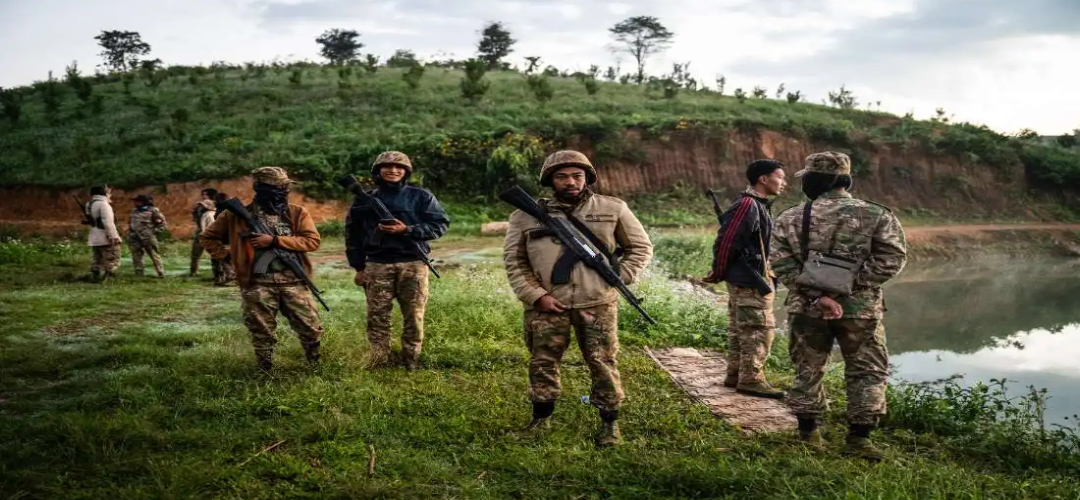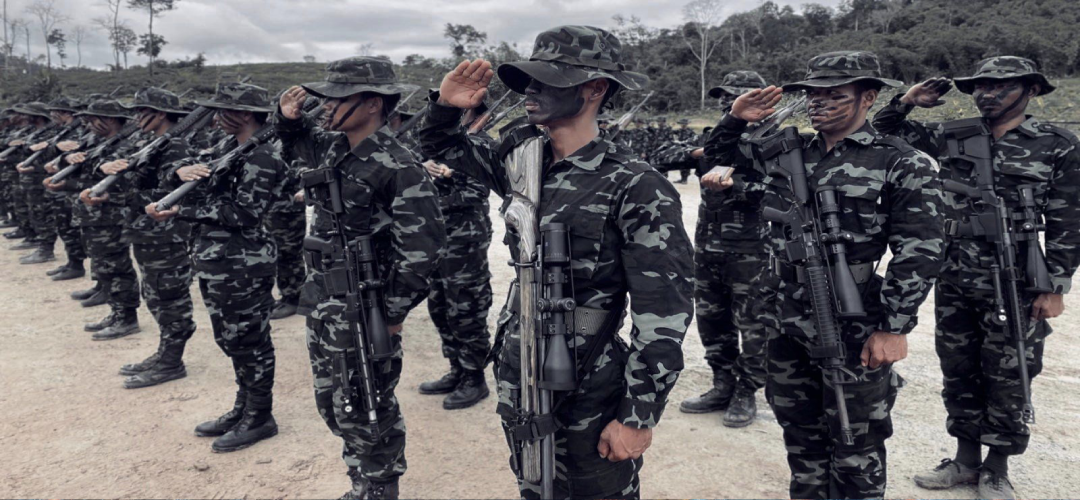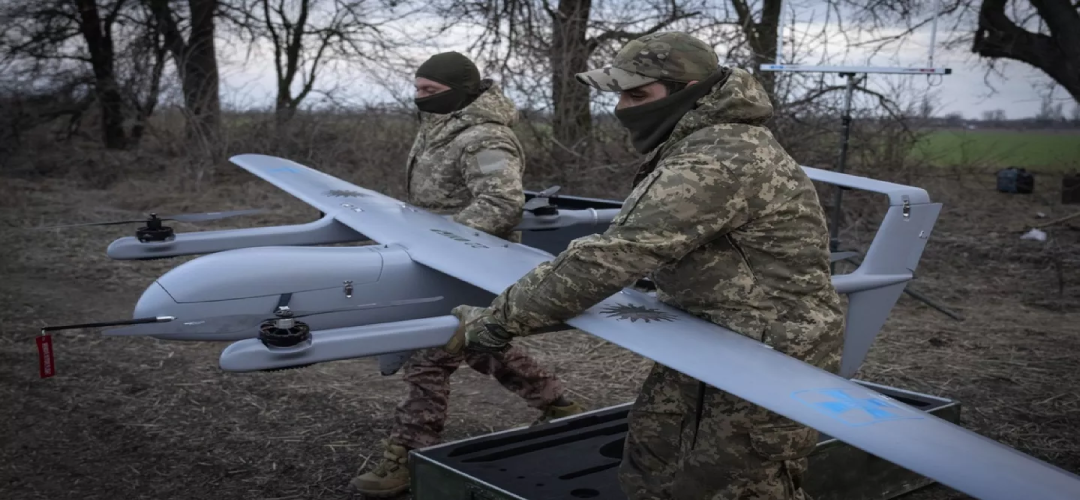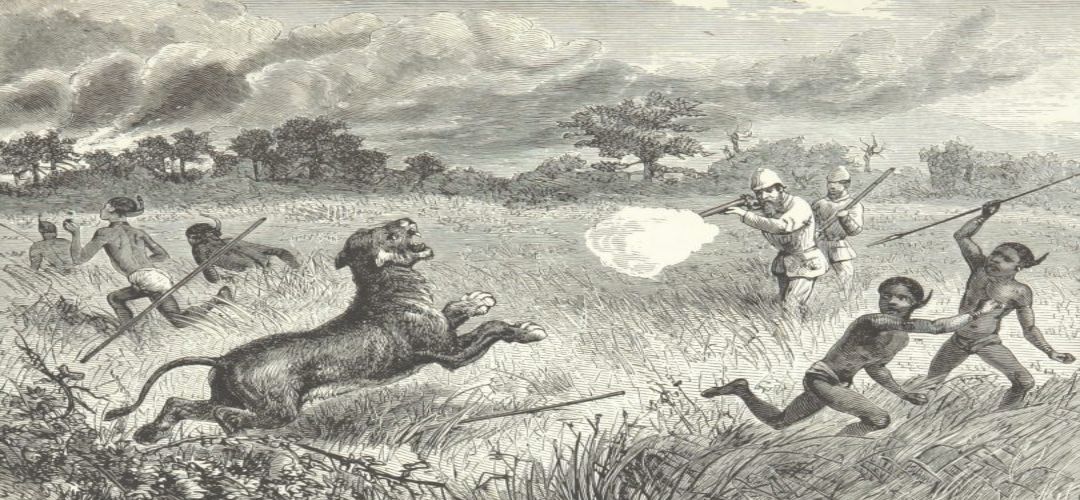Myanmar’s dreaded Tatmadaw, or the armed forces, has been steadily losing ground to the rebels. But is the end near?
Pushed into the margins of international consciousness by the high voltage conflicts first in Ukraine and now in Gaza, there is a deadly struggle for freedom being wages in remote jungle hamlets and lush green primary forests of Myanmar. For some months now, there have been murmurs of something unusual brewing behind the opaque curtain thrown up by Tatmadaw.
In January this year, Indian media reported that nearly 600 Myanmar Army soldiers crossed into India amid intense clashes. They took refuge in Mizoram’s Lawngtlai district after their camps were captured by the Arakan Army (AA) militants – an ethnic armed group in the western Myanmar state of Rakhine. They were subsequently repatriated to Rangoon by air.
Similarly, in April, Thailand allowed Myanmar’s military junta to land three flights in its border town of Mae Sot to evacuate hundreds of military personnel and civilian government servants fleeing the fighting in the bordering Karen State.
The ongoing conflict in Myanmar has taken a significant turn recently due to events in the vital border town of Myawaddy. One of the most potent ethnic armed groups in Myanmar, the Karen National Union (KNU), asserts that it has taken control of the final military installation in Myawaddy, a vital commerce hub with Thailand. This triumph underscores the junta’s growing challenges in retaining power in the face of an unrelenting resistance movement supported by numerous ethnic armed groups.
Clearly, the Tatmadaw is being pushed against the rope as three ethnic minority forces combine with democratic movements to launch a coordinated offensive against the military junta since last October.
Background
With 200,000 residents, Myawaddy in the southeast is an important hub for trade with Myanmar. The junta has suffered a serious blow with the KNU’s seizure of the town. A KNU spokesman, Saw Taw Nee, claimed that the town was taken over by the rebels when the junta troops abandoned their positions and retreated to the No. 2 Friendship Bridge, which connects Thailand and Myanmar, in anticipation of reinforcements that never materialised.
The loss of Myawaddy will impact trade and signify a strategic and symbolic defeat for the junta, which has been struggling to maintain authority since the coup in February 2021.
There have been incessant battles around the town for several weeks, indicating the intensity of the war for Myawaddy. The Karen National Liberation Army (KNLA) and its allies have been progressively taking over military bases and outposts on the outskirts of Myawaddy since the beginning of April. The last military base in the town, Battalion 275, was taken by the KNLA, marking the culmination of the resistance’s campaign. This triumph came after unsuccessful negotiations for the junta’s forces to submit. Even with the win, things are still unstable. Locals worry that the junta may launch airstrikes, which is a method it has used in the past to retake lost territory. These worries have been heightened by reports of fighter jets passing overhead, leading many to send their families to Thailand in search of safety.
The struggle for Myawaddy is a microcosm of the broader conflict engulfing Myanmar. The country has been in turmoil since the military coup in 2021, which ousted the democratically elected government of Aung San Suu Kyi. The junta’s harsh crackdown on dissent has sparked a nationwide armed resistance, including many of the country’s powerful ethnic rebel groups like the KNU.
The resistance’s growing coordination and military successes indicate the junta’s weakening grip on power. Last month, ethnic rebels in northern Kachin state seized a key trading town on the Myanmar-China border. The Arakan Army has captured significant territories from the junta in western Rakhine state. Despite its formidable military strength, these defeats underscore the junta’s inability to reverse its losses.

Analysis
The resistance forces’ capture of Myawaddy has broader strategic implications. Myawaddy’s location makes it a crucial hub for trade with Thailand, accounting for a significant portion of Myanmar’s border trade. Control over such strategic points can disrupt the junta’s supply lines and revenue streams, further weakening its position.
Moreover, the resistance’s success in Myawaddy reflects a broader trend of increasing coordination among Myanmar’s diverse ethnic armed groups. Historically, these groups have had conflicting interests and rivalries. However, the shared goal of toppling the junta has fostered unprecedented levels of cooperation. This unity presents a formidable challenge to the junta, now fighting a multi-front war against well-coordinated and determined resistance forces.
The conflict’s human toll is immense. The UN and other international organisations have condemned the junta’s use of violence and its impact on civilians. The fighting has displaced thousands, with many seeking refuge in neighbouring Thailand. The humanitarian crisis is compounded by reports of forced labour and human trafficking in areas under junta control.
The international community has called for increased dialogue and humanitarian assistance. Thailand, which shares a border with Myanmar, has begun engaging with various armed groups, indicating a shift in its stance on the conflict. Thai officials have expressed openness to more dialogue, particularly on humanitarian issues, reflecting growing regional concerns over the escalating violence.
Assessment
- The capture of Myawaddy by the Karen National Union and its allies marks a turning point in Myanmar’s civil war. It highlights the junta’s vulnerabilities and the growing strength of the resistance. As the conflict continues, the stakes for Myanmar’s future remain high, with the potential for significant political and humanitarian implications.
- For its part, the resistance faces the daunting task of maintaining unity and momentum. The diverse interests of Myanmar’s ethnic armed groups could complicate long-term cooperation. Nonetheless, the shared objective of ending military rule strongly incentivises continued collaboration.
- The situation in Myanmar will likely remain fluid and volatile in the coming months. As the resistance forces consolidate their gains, the junta’s ability to respond effectively will determine the conflict’s trajectory. However, this in no way predicts a final military victory for democratic forces as the Tatmadaw is too powerful and the resistance disparate and poorly organised




